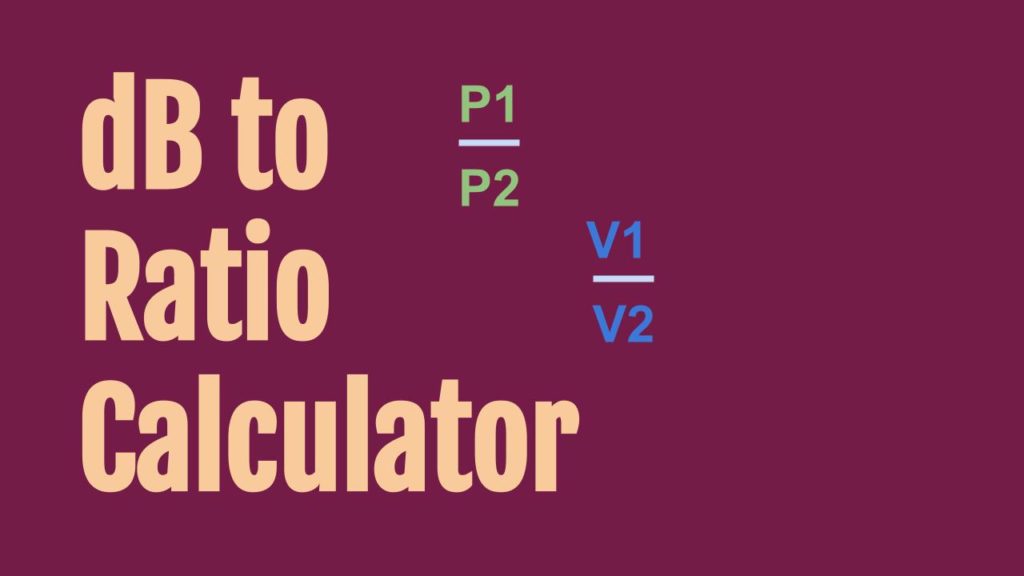This tool converts a Power Gain in dB to the ratio of:
- Power (Pout/Pin)
- Voltage (Vout/Vin)
Formula
PdB = 10*Log10(P1/P2)
PdB = 20*Log10(V1/V2)
and therefore the ratios
P1/P2 = 10(PdB/10)
V1/V2 = 10(PdB/20)
Example Calculations
A 10 dB value gives a power ratio of 10 and a voltage ratio of 3.162 : 1 or simply 3.162 (where the 1 is implied).
A -10 dB value gives a power ratio of 0.1 and a voltage ratio of 0.3162.
Note that negative dB values have a higher voltage ratio value than power ratio. The reverse is true for positive dB values.
Notes
- PdB is a real number and can be positive or negative. A positive number indicates a power gain, while a negative number represents attenuation.
- Within the context of this conversion, ratio is referred to as linear value. Sometimes it is also referred to as a normal value. Normal being what most people are familiar with as representing a non-logarithmic value.
It is important to note that the dB scale is logarithmic, meaning that small changes in dB correspond to large changes in the power or voltage ratios. This conversion ratio is widely used in various fields such as telecommunications, radio frequency engineering and audio engineering.
Frequently Asked Questions
Is it 10*Log or 20*Log?
When dealing with Power, it is 10*Log and when dealing with Voltage it is 20*Log.
Let’s get into the details.
From [1] If P1 and P2 are two powers, their ratio expressed in decibels is:
PdB = 10*Log10 (P1 / P2)
Where P1 = V12/R1 and P2 = V22/R2
where R1 and R2 are impedance or resistance values (ohm or Ω)
V1 and V2 are both Root-Mean-Square (RMS) values of voltage which can be calculated from
- a sequence of voltage values or
- using a closed form expression for RMS voltage when the waveform is known.
If R1=R2, then
PdB = 10*Log10 (V12/ V22)
or PdB = 20*Log10 (V1/ V2)
Hence it is 20*Log when calculated using a ratio of voltage and 10*Log when using a ratio of power.
References
[1] Use of the deciBel and Neper in Telecommunications
[2] DeciBel on Wikipedia
